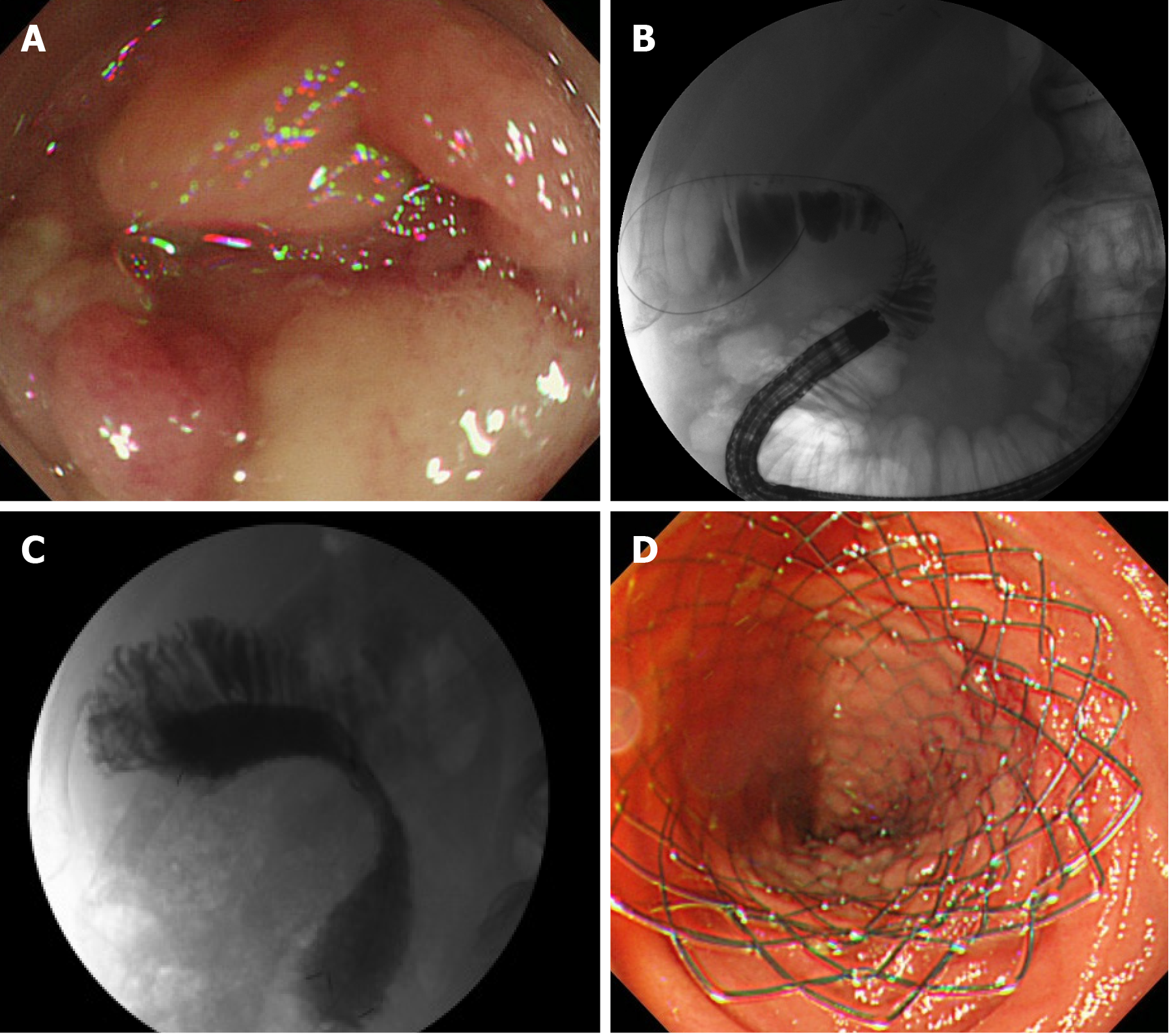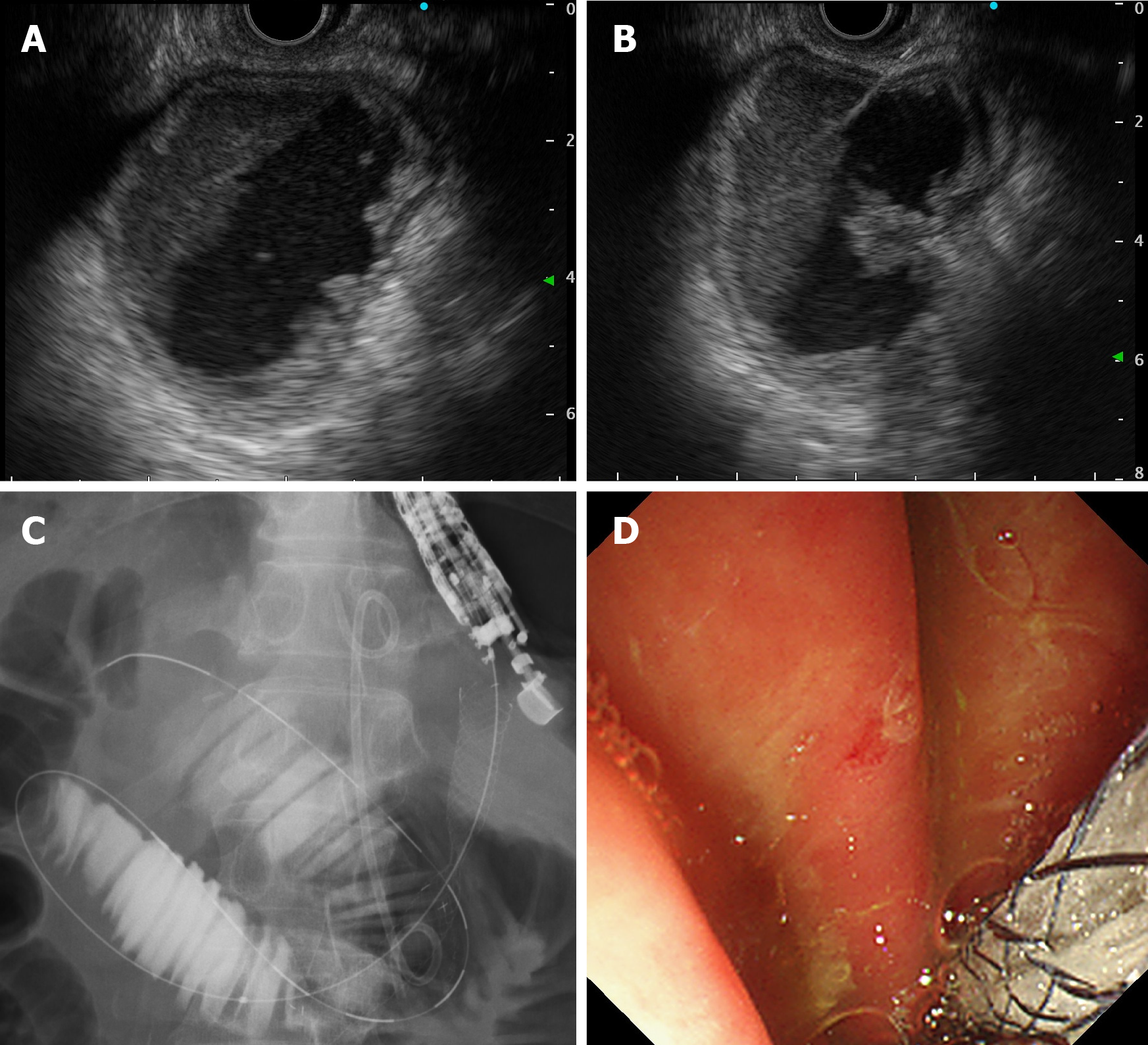Copyright
©The Author(s) 2021.
World J Gastrointest Oncol. Jul 15, 2021; 13(7): 684-692
Published online Jul 15, 2021. doi: 10.4251/wjgo.v13.i7.684
Published online Jul 15, 2021. doi: 10.4251/wjgo.v13.i7.684
Figure 1 A computed tomography scan.
A: Distention of the afferent loop by a recurrent tumor; B: Biliary dilation; C: Coronal section.
Figure 2 Therapeutic schemas for malignant afferent loop obstruction.
A: Treatment of malignant afferent loop obstruction (ALO) with obstructive jaundice by percutaneous transhepatic biliary drainage; B: Treatment of malignant ALO by direct percutaneous afferent loop drainage; C: Treatment of malignant ALO by endoscopic transluminal self-expandable metal stent; D: Treatment of malignant ALO by endoscopic ultrasound-guided gastrojejunostomy.
Figure 3 Endoscopic transluminal self-expandable metal stent for malignant afferent loop obstruction.
A: Neoplastic stenosis in the afferent loop blocked further passage of the endoscope; B: The stenosis was confirmed with contrast media; C: Self-expandable metal stent was placed by the standard through-the-scope technique under fluoroscopic view; D: Endoscopic view.
Figure 4 Endoscopic ultrasound-guided gastrojejunostomy for malignant afferent loop obstruction.
A: Endoscopic ultrasound (EUS) shows the dilated afferent loop; B: Dilated afferent loop was punctured using a 19G FNA needle with an EUS guide; C: Self-expandable metal stent was placed using the standard through-the-scope technique under fluoroscopic view; D: Endoscopic view.
- Citation: Sakai A, Shiomi H, Masuda A, Kobayashi T, Yamada Y, Kodama Y. Clinical management for malignant afferent loop obstruction. World J Gastrointest Oncol 2021; 13(7): 684-692
- URL: https://www.wjgnet.com/1948-5204/full/v13/i7/684.htm
- DOI: https://dx.doi.org/10.4251/wjgo.v13.i7.684












